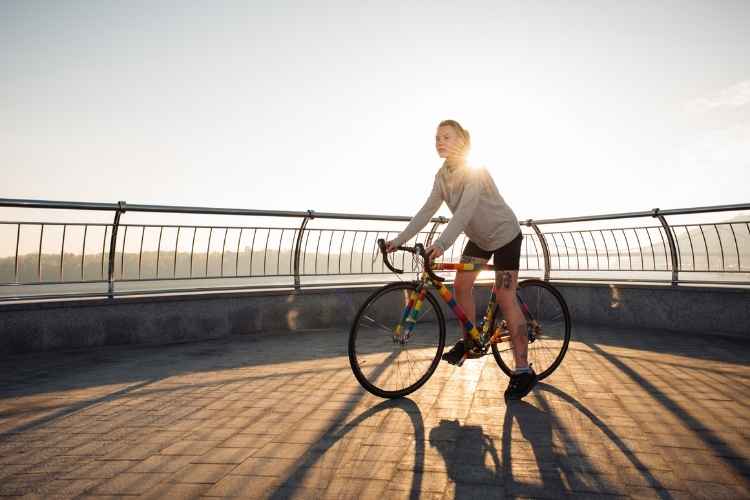You might think that bike shoes aren’t necessary because it’s so simple to get on your bike and start riding. Well, you’d be mistaken! Bike shoes aren’t simply a luxury—they’re a must if you’re a cyclist or mountain biker who plans on clocking more than a few kilometres. If you ride often, you should consider investing in a pair. Although you can ride a bike in any shoes, anyone who rides frequently appreciates the advantages of well-made cycling shoes.
Firm footing
Cycling shoes have the advantage of locking into your bike’s pedals, similar to how ski boots lock onto a ski. Cycling shoes (and stationary cycling shoes) include holes in the bottom where you may attach cleats (metal or tough rubber plate) to match the holes on your cycle pedals (more on that below). You won’t have to think about your feet sliding out from under you while biking in spin shoes.
A Stable Foundation for More Powerful Strokes
The majority of sports footwear are adaptable, allowing you to bend and move your foot. Bicycle shoes have a firm sole that aids in energy optimization. You can ride more efficiently throughout the pedal stroke if your feet are flat and sturdy. The pushing motion might be made by your hamstrings, while the pulling motion can be made by your hip flexors (muscles that span your pelvis). This results in a more potent ride.
A more comfortable ride
Linking your feet to the pedal improves overall stability and decreases the amount of effort required of your legs to maintain your feet in place. This enhances your pedalling efficiency by smoothing down your stroke.
Safety
Another reason to think about bicycle shoes is their safety. When your legs aren’t linked to the pedals, you’re at risk of slipping off the pedals while moving. You may not be able to move your legs out of the line of collision before the crank spins the pedals around and strikes your leg if you’re pedalling swiftly. At lower cadences, when the pedals have a lot of torque, biking shoes make things safer. You could fall or crash down on the seat’s horn if you were getting off the saddle on a steep incline and your feet slid off the pedals.
You must wear road shoes if you bike on the road or indoors. If you’re a mountain biker, choose footwear with stiff soles and a durable, flexible upper. Ensure the shoes have bolt drillings on the soles appropriate for the pedal system you plan to use, which can be a three-hole or two-hole system. Choose shoes that enable your foot to stretch slightly to reduce pain on long or hot rides.
Outside cleats on road shoes can make them unsteady and challenging to walk in. For example, if you need to shop at the grocery while riding your bike, you’ll need boots with recessed cleats. Mountainous and special trekking shoes are available. The second element to examine is the learning curve. Learning to clip in or out of the pedal is not difficult, but it does require some practice. Unclipping will become instinctive after a few tumbles.
While many think of riding as slamming down on the pedals and spinning in circles, the proper form requires pushing down and raising. Wearing bike shoes that connect your feet to the pedals makes this much easier. Investing in a pair of bicycling shoes—and even wearing them in the mornings if you plan to go for a ride—can substantially increase your chances of sticking to your exercise plan.


























